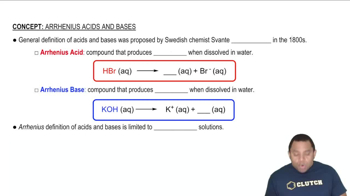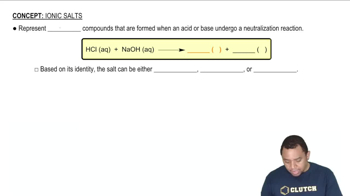Here are the essential concepts you must grasp in order to answer the question correctly.
Acid-Base Chemistry
Acid-base chemistry involves the study of substances that can donate protons (acids) or accept protons (bases). The pH scale measures the acidity or basicity of a solution, with lower values indicating higher acidity and higher values indicating higher basicity. Understanding how acids and bases interact is crucial for predicting changes in pH when different substances are added to a solution.
Recommended video:
Arrhenius Acids and Bases
Buffer Solutions
Buffer solutions are mixtures that can resist changes in pH upon the addition of small amounts of acids or bases. They typically consist of a weak acid and its conjugate base or a weak base and its conjugate acid. The addition of substances like NH4NO3 or Na2CO3 to buffer solutions can affect the equilibrium between the acid and base components, thus influencing the pH.
Recommended video:
Salt Hydrolysis
Salt hydrolysis refers to the reaction of a salt with water to produce an acidic or basic solution. When salts like NH4NO3 or Na2CO3 dissolve in water, they can dissociate into their constituent ions, which may interact with water to form either H+ or OH- ions, thereby altering the pH. Understanding the nature of the ions produced is essential for predicting the pH change in a solution.
Recommended video:
 Verified step by step guidance
Verified step by step guidance

